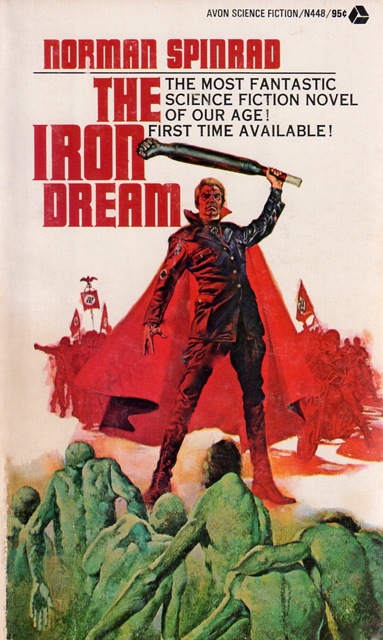 Last year, a friend of mine mentioned he planned on rereading Norman Spinrad’s The Iron Dream without irony. Synchronicity as I had been thinking of doing the same thing.
Last year, a friend of mine mentioned he planned on rereading Norman Spinrad’s The Iron Dream without irony. Synchronicity as I had been thinking of doing the same thing.
Norman Spinrad wrote one of the greatest Star Trek episodes, “The Doomsday Machine” from Season 2. He wrote a couple competent space operas in the 60s, but more associated with the “New Wave” movement of the late 60s. His iconoclastic novel Bug Jack Baron has its fans.
The Iron Dream was first published by Avon Books, September 1972. A supposed work of satire set in an alternate history where Adolph Hitler emigrated to the U.S. after WWI and became first a science fiction pulp magazine illustrator and then writer. His last novel Lord of the Swastika won a Hugo Award in 1954 after Hitler had died in 1953. There is a list of fictional novels by Hitler: Emperor of the Asteroids, The Builders of Mars, Fight for the Stars, The Twilight of Terra, Savior From Space, The Master Race, The Thousand Year Rule, The Triumph of the Will, Tomorrow the World. The first five titles sound like 1950s Robert Silverberg space operas. Read More
Science Fiction and Fantasy New Releases: 8 March 2025
Saturday , 8, March 2025 Uncategorized Leave a commentEvery week, the Castalia House Blog spotlights some of the many new releases in independent, pulp, and web novel-influenced science fiction and fantasy.
Ever want revenge so bad you’d cross the galaxy for it?
U.S. Marine Jake Bayard does. After a telepathic killer executes his pregnant wife, he hunts the psycho through warp gates—straight to Atlantis.
This Atlantis is an ocean world drowning in secrets. Under the waves lurk genetically altered horrors, airship-riding reptilian warriors, and relics of Nazi U-boats. Worst of all, something vast and hungry stirs in the deepest trenches—a cosmic evil the Atlanteans once sank their whole civilization to contain.
Now Bayard faces an impossible choice: keep chasing his wife’s murderer or stop an ancient horror from escaping its watery prison. One wrong move could doom humanity to cosmic annihilation.
Alien life awaits humanity in the deepest of cold…
Propulsion scientist Dr. Todd Cunningham was an astronaut headed for outer space, until budget cuts killed the mission—and his lifelong dream. Now he’s just an obscure expert in fusion-powered space travel, a professor buried in an ever-increasing pile of work.
But when a daring mission is approved to travel to Europa, Jupiter’s frozen moon, Cunningham is thrust back into the spotlight by the very man he blames for ending his NASA career, and he finds himself joining the ranks of NASA astronauts on a groundbreaking journey to challenge humanity’s understanding of life in the universe.
As the crew ventures into the unknown, their mission to uncover alien life beneath the icy surface quickly turns perilous. Battling treacherous terrain, unforeseen threats, and the ghosts of his own past, Cunningham must navigate a deadly landscape where survival is anything but guaranteed.
The Call of the Beast summons. He fears failing.
Leo Stormrider never expected to be humanity’s last hope. When the Supreme Realm Lord becomes infected by an Unbeast parasite, Leo volunteers for a desperate mission to the Silent Grave—a legendary burial ground where the realm’s darkest secrets lie buried with its dead.
But what begins as a quest for salvation becomes a race against time when Leo discovers the true threat: the followers of a tyrannical Beastcaller from the past seek to use Leo’s body to resurrect their master. With his Familiar Shadowshine at his side and the ghost of an ancient hero as his guide, Leo must master a forbidden combination of life and soul magic that hasn’t been attempted in a thousand years.
As the Supreme Realm Lord battles the parasite consuming him and the servants of the long-dead Beastcaller plot their master’s return, Leo faces an impossible choice: risk everything on an untested theory or watch as both the realm’s greatest defender and Leo’s humanity slip away forever.
In a graveyard where every shadow holds a secret and death itself is not the end, Leo must prove that a Beastcaller can do more than speak to animals—he can change the very nature of life and death itself. Read More
Sensor Sweep: Forgotten Realms, White Dwarf, Averoigne
Monday , 3, March 2025 Sensor Sweep 1 CommentComic Books (Dark Worlds Quarterly): Sword & Sorcery comics were well-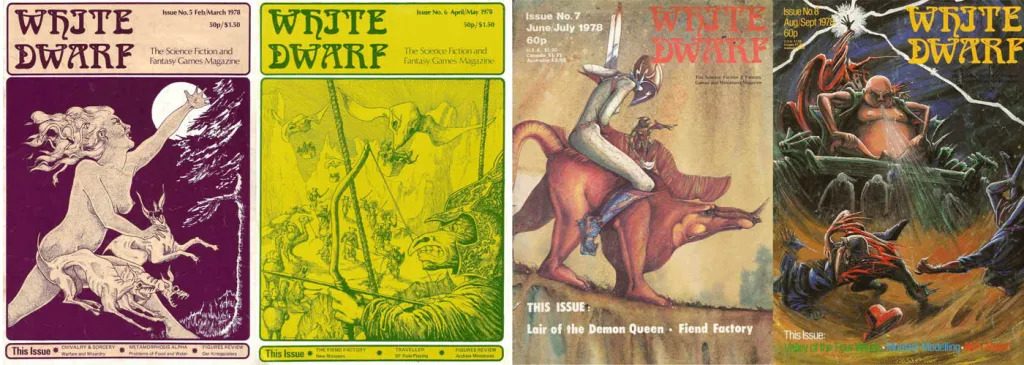 established by 1978. Conan the Barbarian, Savage Sword of Conan, The Warlord dominated at Marvel and DC. What wasn’t well-known was the new RPG gaming magazines. The Dragon started as another magazine but launched in its Dragony form June 1976. That magazine offered funny cartoons about playing AD&D as well as later comic stories like Larry Elmore’s Snarfquest.
established by 1978. Conan the Barbarian, Savage Sword of Conan, The Warlord dominated at Marvel and DC. What wasn’t well-known was the new RPG gaming magazines. The Dragon started as another magazine but launched in its Dragony form June 1976. That magazine offered funny cartoons about playing AD&D as well as later comic stories like Larry Elmore’s Snarfquest.
Star Wars (Nerdrotic): OH SHE’S PISSED!!! Kathleen Kennedy Sets the Record “Straight” On Her Lucasfilm Future.
Old Radio (Comics Radio): The Whistler: “Murder has a Signature” 1/15/45 Read More
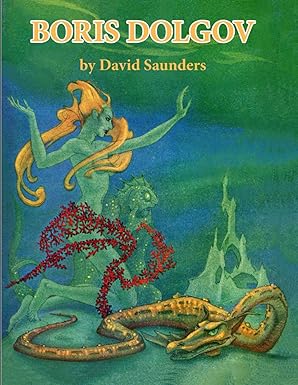 David Saunders, son of artist Norman Saunders has been producing a series of art biographies of pulp era artists: Norman Saunders, Rafael DeSoto, Walter Baumhaufer, Allen Anderson, and now Boris Dolgov.
David Saunders, son of artist Norman Saunders has been producing a series of art biographies of pulp era artists: Norman Saunders, Rafael DeSoto, Walter Baumhaufer, Allen Anderson, and now Boris Dolgov.
Boris Dolgov might be my favorite artist of Weird Tales magazine. I like Hannes Bok and some of Hugh Rankin’s interior illustrations but Dolgov always attracted my attention. He was the best artist for the magazine in the 1940s. Read More
Science Fiction and Fantasy New Releases: 1 March 2025
Saturday , 1, March 2025 Uncategorized Leave a commentEvery week, the Castalia House Blog spotlights some of the many new releases in independent, pulp, and web novel-influenced science fiction and fantasy.
Humanity’s last hope is… a combat sports champion?
In the wake of humanity’s great expansion across the stars, war was a thing of the past, and its armies and navies were disbanded. Disputes were settled by the ancient practice of trial by combat in the Gladius Leagues, where elite athletes clad in advanced powered armor fought in front of millions. Their motto was, “We fight so others don’t have to.”
Nick “Warhorse” Landry, star Field Commander of the Foundry Warhawks, was content to live by that code—until everything changed. His home planet fell under a terrifying alien invasion while he was light years away. But when the invasion reaches his current system, humanity has a defense.
Unfortunately, that defense is Warhorse and his team of prima donna athletes. They’re stars of the arena, but they’re woefully unprepared for real war. With the guidance of the last surviving general from the Expansion Wars, these sports heroes are thrust into a battle for survival, and they’ll have to learn fast, or humanity faces total extinction.
Will Warhorse and his crew rise to the occasion—or fall in the final battle for humanity’s future?
Thomas never expected to find Excalibur stuck beneath a Welsh lake. He never asked to be a hero. And he certainly never imagined standing between a tyrant and the fate of a galaxy.
Destiny doesn’t wait for permission.
From the mystical world of Avalyeth, Thomas’ journey will lead him and his growing crew into the heart of enemy territory, the halls of ancient dragons, and the path of knights who remember a time when hope still burned bright. Hunted by the Draconite and haunted by the past, they’ll need to risk everything to outmaneuver and overcome those who would see them destroyed.
As new alliances form and old rivalries re-ignite, Thomas must prove he’s more than just the captain of a legendary starship—he must become the leader others believe him to be.
Even if he still isn’t sure he believes it himself.
Trapped aboard the crippled starship Erebus, spiraling toward the crushing grip of a black hole, Inspector Layton Trent and his team face oblivion. Their only hope? A desperate alliance with the ship’s renegade crew. Bitter enemies must work together, or they’ll vanish into the abyss.
But survival comes at a price. When Erebus finally breaks free, they emerge 20,000 years in the future to a desolate galaxy.
Entire civilizations are extinct.
Humanity is gone.
An overwhelming, enigmatic force has swept across the stars, consuming entire worlds to fuel its relentless expansion. The last remnants of intelligent life have fled toward the galactic core, desperate to escape annihilation. With no way back and an unstoppable enemy hunting them, Layton and his crew have only one choice, to follow the survivors into the unknown.
What begins as a desperate flight soon becomes something far greater.
From the ruins of a dying galaxy to the final flickers of existence itself, Layton and his crew will push beyond the boundaries of time and space, searching for answers – about the force that hunts them, the fate of those who came before, and the ultimate mystery of what lies beyond the end of everything. Read More
Sensor Sweep: Comics Code, Michael Moorcock, Drow, Heavy Metal
Monday , 24, February 2025 Sensor Sweep Leave a commentPulp (Rough Edges): This is a pulp that I own and read recently. That’s my copy in the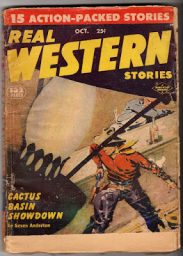 scan. I don’t know why the front cover is missing that strip at the bottom. That’s the way I got it. Luckily, the loss doesn’t detract too much from the cover by A. Leslie Ross. Not in the top rank of Ross’s work, to my mind, but his covers are always worthwhile. I’ll put a scan of the whole cover from the Fictionmags Index at the end of this post.
scan. I don’t know why the front cover is missing that strip at the bottom. That’s the way I got it. Luckily, the loss doesn’t detract too much from the cover by A. Leslie Ross. Not in the top rank of Ross’s work, to my mind, but his covers are always worthwhile. I’ll put a scan of the whole cover from the Fictionmags Index at the end of this post.
James Bond (Rageaholic):No Time to DEI – Amazon Buys Bond!
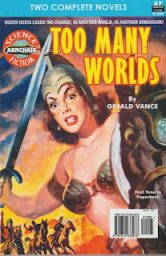 Science Fiction (Vintage Pop Fictions): Gerald Vance’s Too Many Worlds was published in Amazing Stories in December 1952. Except that there was no such person as Gerald Vance. It was a Ziff-Davis Publishing house name used by lots of writers. Nobody is sure of the identity of the author of this book although Berkeley Livingston has been suggested. It does have a very similar feel to Livingston’s Queen of the Panther World, and it has the same flaws which we’ll get to later. Read More
Science Fiction (Vintage Pop Fictions): Gerald Vance’s Too Many Worlds was published in Amazing Stories in December 1952. Except that there was no such person as Gerald Vance. It was a Ziff-Davis Publishing house name used by lots of writers. Nobody is sure of the identity of the author of this book although Berkeley Livingston has been suggested. It does have a very similar feel to Livingston’s Queen of the Panther World, and it has the same flaws which we’ll get to later. Read More
 I enjoy reading a western novel now and then. I had read a couple of Elmore Leonard’s westerns decades ago. More recently, I really enjoyed The Complete Western Stories of Elmore Leonard. The T.V. show Justified was one of the few I would take time out to watch when it was one. I decided to make my way through all of Leonard’s western novels.
I enjoy reading a western novel now and then. I had read a couple of Elmore Leonard’s westerns decades ago. More recently, I really enjoyed The Complete Western Stories of Elmore Leonard. The T.V. show Justified was one of the few I would take time out to watch when it was one. I decided to make my way through all of Leonard’s western novels.
Mariner Books has a couple Elmore Leonard western doubles, two novels contained within one binding. Last Stand at Saber River and The Law at Randado is one of the doubles. Read More
Science Fiction and Fantasy New Releases: 22 February 2025
Sunday , 23, February 2025 Uncategorized Leave a commentEvery week, the Castalia House Blog spotlights some of the many new releases in independent, pulp, and web novel-influenced science fiction and fantasy.
The hunt for Kukuluki continues.
In a galaxy where treachery and double-dealing is the normal way of conducting business, Kukuluki is in a league of his own. And if you get on his bad side, like the Queen Elizabeth’s Own Foresters have, he’ll use those skills to make sure you regret it.
The time has come for vengeance. The Foresters and their allies are arming themselves to rid the galaxy of his evil.
But first, they have to find him. Then avoid all the traps he’s surely set in their path. And then defeat all the mercs one of the richest beings in the galaxy can afford.
Both sides know the stakes. The time has come to end this once and for all. It’s time to be tenacious and versatile.
Stranded on an alien world. Surrounded by enemies. He must learn to fight… or die.
When the apocalypse strikes the world Kyle Mayhew calls home, he is thrust into a struggle for survival.
Alongside his Central Health Autonomous Diagnostic Drone (C.H.A.D.D.), he will have to overcome mutated creatures, ruthless marauders, and his grandfather’s legacy to carve out a new home.
He might even find that he belongs…
Where celestial power shapes destiny, Roran Los has become a voidheart. Can Roran find an even greater purpose?
As he struggles to control his unique gift, Roran finds himself thrust into a dangerous journey beyond his isolated basin.
Pursued by powerful forces and accompanied by unlikely allies, Roran must navigate treacherous landscapes and uncover ancient secrets. With the threat of the Astralin looming, Roran’s growing abilities may be the key to igniting long-dormant relics and reshaping the balance of power.
But as Roran delves deeper into his voidheart nature, he faces a crucial choice: will he use his power to protect those he loves, or will he become the very threat he seeks to overcome?
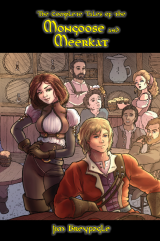 The Complete Mongoose and Meerkat – a Kickstarter campaign from Cirsova
The Complete Mongoose and Meerkat – a Kickstarter campaign from Cirsova
He’s a brash young bravo, eager to prove his worth with a blade. She’s a mysterious rogue with a head for history and razor cunning. Together, they are the Mongoose and Meerkat!
Whether they’re looting haunted dungeons, fighting demons and necromancers, or just settling labor disputes, this swashbuckling duo is ready for anything! Mangos would love nothing more than to earn a name for himself and keep himself comfortably in coin. Kat, however, has more far-reaching plans for her wealth.
The City State of Alness has fallen to a band of mercenaries and brigands who have ravaged the north lands. Amidst the rumors that an Alnessi royal may have survived, the Mongoose and Meerkat must navigate all manner of intrigue and betrayal to win the fame and fortune necessary to restore the once-mighty city.
Originally serialized in 18 installments from 2017 through 2023 in Cirsova Magazine, Jim Breyfogle’s Mongoose and Meerkat became one of the iconic Sword & Sorcery teams of the Pulp Revolution. Now, you can have all of their adventures in a single gorgeous volume!
Sensor Sweep: Romantasy, C. L. Moore, Mythus, Sherlock Holmes
Monday , 17, February 2025 Sensor Sweep Leave a commentFiction (Jon del Arroz): Romantasy is all the new rage from authors like Rebecca Yarros and Sarah J. Maas. How did fantasy fiction get to this point?
Popular Culture (Kairos): A raging debate between members of Generation Y and the Millennials revolves around this question: Which decade was superior–the 1980s or the 1990s? As with the prevailing generational models themselves, cultural eras defy easy sorting into neat and tidy boxes. What we tend to think of as 1960s culture, for instance, didn’t really gain steam until 1968 and lasted into the early 70s. Read More
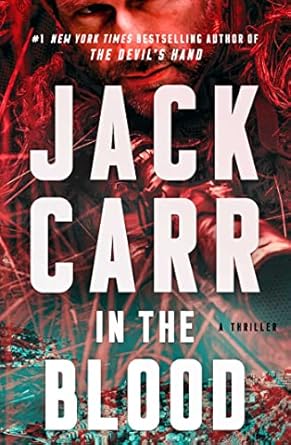 In the Blood is the fifth book in Jack Carr’s “Terminal List” series. The novel starts with a female Mossad agent who has killed someone in the nation of Burkina Faso in Africa. Leaving in a jet, it is blown out of the sky. She was a friend of James Reese going back to a deployment of his in Iraq.
In the Blood is the fifth book in Jack Carr’s “Terminal List” series. The novel starts with a female Mossad agent who has killed someone in the nation of Burkina Faso in Africa. Leaving in a jet, it is blown out of the sky. She was a friend of James Reese going back to a deployment of his in Iraq.
Thus begins his quest to find who killed Aliya Galin. The plots thickens as Nizar, the Syrian sniper who Reese is after was involved with downing the jet. Russian foreign intelligence and the FSB are involved. They want Reese dead before he can discover some piece of evidence involving the death of his father. Killing Galin was bait to lure Reese to his death. Read More
Science Fiction and Fantasy New Releases: 15 February 2025
Sunday , 16, February 2025 Uncategorized Leave a commentEvery week, the Castalia House Blog spotlights some of the many new releases in independent, pulp, and web novel-influenced science fiction and fantasy.
One man must lead the charge in the name of humanity.
Major Ethan Irons thought surviving Earth’s near-extinction event was the pinnacle of disaster, but when the remnants of humanity are catapulted into a galactic conflict beyond their wildest nightmares, he’s plunged into an unimaginable odyssey.
Armed with nothing but his wits, a sardonic AI companion, and unlikely alliances with enigmatic alien species, he must navigate the treacherous waters of intergalactic politics and warfare.
Can Ethan and his ragtag band of survivors rekindle the flame of hope for humanity?
Stuck in a new world. Surrounded by monsters. It’s time to Fight, Level, and Survive.
When Mason wakes up naked and alone in a whole new world, everything changes. Lying there with blades of blue grass stabbing him in his ass, he has no idea just how chaotic his life is about to become.
His new world is crammed full of monsters, magic, and worse. But first things first. He’s arrived buck-naked in a strange land—should he pick a weapon or clothes first?
That’s just step one. After that, it’ll take his wits, charm, a ton of luck, and a heavy dose of sarcasm to ensure his survival as he levels up and learns to thrive.
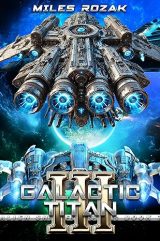 Galactic Titan III – Miles Rozak
Galactic Titan III – Miles Rozak
Sometimes you don’t get what you par for… when bending spacetime pays for itself.
Like most people, Captain Gage thought time was linear. One thing after the next. Well, that’s how it felt.
Until spacetime nearby turned into a loop.
His Commonwealth? Sold out by bribery and corruption. His task force? Disbanded… now lost or dead. If history’s fixed, what options are left?
One thing about cycles – they’re made to be broken.
So that’s what Gage is going to do next. Read More
Sensor Sweep: Planet Comics, Elric, Edgar Rice Burroughs
Monday , 10, February 2025 Sensor Sweep Leave a commentFiction (Three Investigators Books): In the first book of a 26-book story arc, it’s the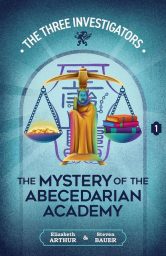 summer before their freshman year in high school and Jupiter Jones, Bob Andrews, and Pete Crenshaw are back on the case in Rocky Beach, California. Their new client, Isabella Chang, wants to discover the truth about a murdered ancestor whose son Li Chang is rumored to have hidden a bag of gold nuggets his father panned from the American River during the heady days of the California gold rush.
summer before their freshman year in high school and Jupiter Jones, Bob Andrews, and Pete Crenshaw are back on the case in Rocky Beach, California. Their new client, Isabella Chang, wants to discover the truth about a murdered ancestor whose son Li Chang is rumored to have hidden a bag of gold nuggets his father panned from the American River during the heady days of the California gold rush.
Publishing (Kairos): At the height of the Disney Star Wars controversy, YouTuber David V. Stewart produced an insightful video The 5 Phases of Corporate IP Ownership. In his video, David breaks down the corporate decision making process that runs franchises across all media, not just comics, into the ground.
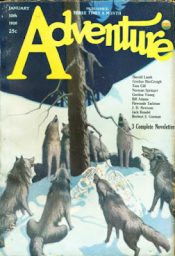 Pulp (Comics Radio): Today, we begin a story-by-story look at a randomly chosen issue of Adventure, a pulp known for publishing high quality tales of… well… adventure. We’ll be looking at the January 10, 1926 issue. I’ve had a PDF copy of this one on my tablet for a few months and now don’t remember why I chose it particularly. But any issue of Adventure is worth visiting. Read More
Pulp (Comics Radio): Today, we begin a story-by-story look at a randomly chosen issue of Adventure, a pulp known for publishing high quality tales of… well… adventure. We’ll be looking at the January 10, 1926 issue. I’ve had a PDF copy of this one on my tablet for a few months and now don’t remember why I chose it particularly. But any issue of Adventure is worth visiting. Read More
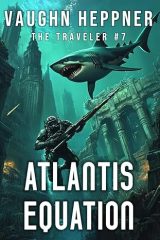 The Atlantis Equation
The Atlantis Equation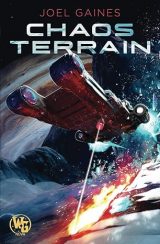 Chaos Terrain
Chaos Terrain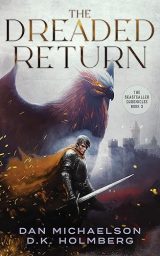 The Dreaded Return
The Dreaded Return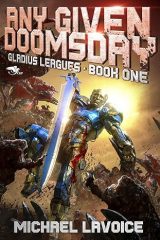 Any Given Doomsday
Any Given Doomsday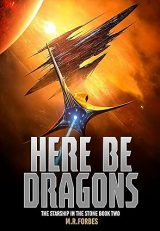 Here Be Dragons
Here Be Dragons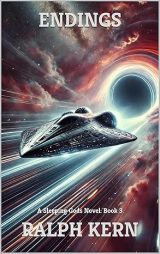 Endings
Endings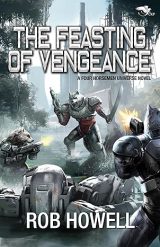 The Feasting of Vengeance
The Feasting of Vengeance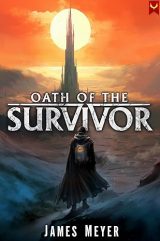 Oath of the Survivor
Oath of the Survivor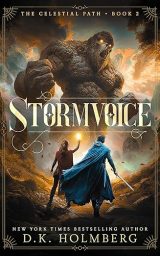 Stormvoice
Stormvoice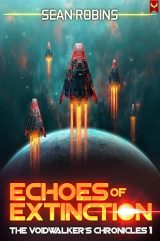 Echoes of Extinction
Echoes of Extinction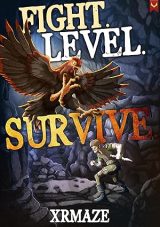 Fight. Level. Survive.
Fight. Level. Survive.